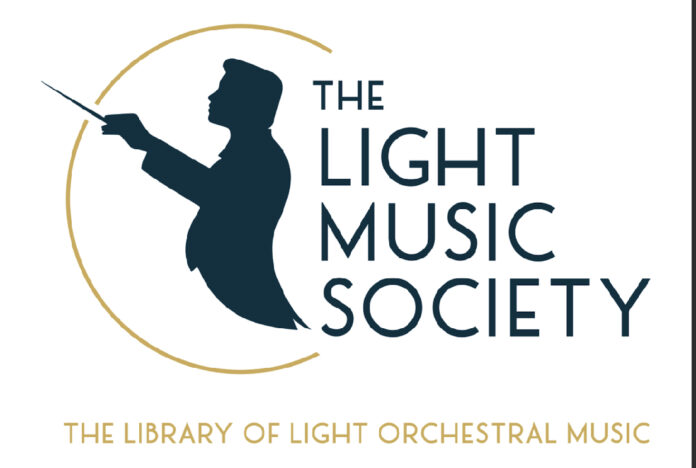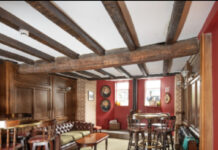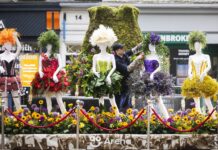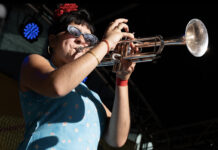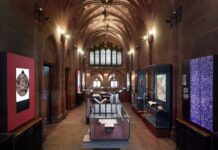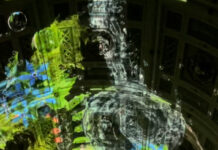In the basement of the Victoria Hall buildings in the centre of Bolton lies a treasure trove of music.
Three rooms are filled with musical manuscripts at the headquarters of a society tasked with protecting a piece of British Heritage.
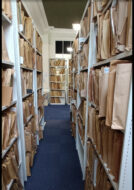
The Light Music Society has been here since 2023 having moved from a Victorian Mill close to Settle in Yorkshire and prior to that from Ernest Tomlinson’s farm in Longridge, Lancashire.
You are probably at this point wondering what light music is. Chances are that you will know very well the tunes filed on the shelves, maybe not by name or composer, but because they are iconic – stuck in the back of your mind from yesteryear to be propelled back into your memories.
There are currently over 35,000 sets of orchestral and dance band music either printed or in manuscript. Over eighty collections have been collected over the years, some donated or salvaged from the BBC. Others donated by professional musicians and conductors, music publishers and libraries that no longer exist
“The society exists for three reasons,” said David Greenhalgh, a trustee of the collection. “It’s a membership society of interest – and we will put on events and talks from time to time. But we also produce a magazine three times a year, as well as monthly e-newsletters. We have over 350 members from around the world consisting of interested individuals and professional and amateur orchestras who borrow music from the library to perform. It, of course, also exists to promote and preserve the music we represent.”
What is Light Music?
So, what is Light Music? It is accessible and has immediate appeal, says Hilary Ashton, the daughter of the founder and well known composer Ernest Tomlinson MBE. “It encompasses a wide variety of styles and genres. Generally, the pieces are quite short as it was the pop music of its day, and focuses on the three-to-four minute hit. All the seaside orchestras and municipal orchestras would play music like this and it would be the shows of the day, the films, the dance music of the day.”
“The collection really is a big part of the history of music”, says Ashton, “with the collection going back at least 150 years.”
When broadcasting began in the 1920’s light orchestral music developed a lot more and became used on the airwaves. The BBC Light Programme especially made use of this kind of music.
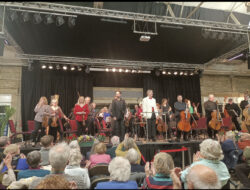
Into the fifties it was the sort of music that you would hear on the Goon Show or Hancock’s Half Hour, and as signature tune music for Radio Programmes. Some of it would be the background music that you would hear for the cinema newsreels.
The collection also includes music for silent films because they would arrive at the cinema without any accompanying music and this was churned out by the publishers in great quantities until the talkies came along.
The LMS has since started to use TikTok to reach new audiences, and David demonstrated an example, where a familiar tune plays with a bit of background history about the theme from Blue Peter, which was originally written by Herbert Ashworth-Hope in the 1930’s, later to be adapted by Mike Oldfield in the 1970’s.
David then played a piece called Calling All Workers written, he says, in the Second World War to encourage people to work harder. Who remembers Alan Freeman’s Pick of the Pops theme, at the Sign of the Swingin’ Cymbal? It was written by Brian Fahey whose archive the society has just received and is ready to be catalogued.
The History
But back to the farmhouse in Longridge. Hilary’s father, Ernest Tomlinson MBE, was a respected composer and conductor. She said, “his music was on the air all the time when I was a kid.” The Test Card, which older people will remember in the days before 24-hour television, would feature a lot of her father’s music.
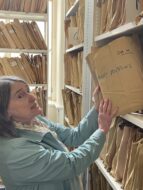
His orchestra broadcast from BBC Manchester several times a year during the 1970s and early 1980s. When visiting London, he would call in at the BBC Music Library to borrow music. But one day he asked for an arrangement that he had as written to put into a particular broadcast and was told that it was in a skip. The BBC had decided that Light Music was no longer deemed necessary to be kept by the mid 1970’s.
ET, as he was affectionately called in the music business, discovered that composers like himself were being treated as past forgotten, and he rescued as much music as he could. His house had a barn attached, and this became the repository for the music he collected. At the start there were no shelves; initially everything was stacked in old wardrobes and filing cabinets.
He then discovered that places such as the Winter Gardens in Blackpool, which had a library going back to the 1880’s, were getting rid of their music. The Winter Gardens had around 15,000 sets which were originally sold off, but not kept together. The LMS archive now has around 3,000 of the pieces from that collection.
He kept collecting before the question was asked, what are we going to do with it? Eventually, in 1984, with a grant from the PRS and the Light Music Society, the LMS became the backing organisation for the collection. It was still family run at this stage with Hilary’s parents and herself at the centre of it.
In 1991 the CD Company Marco Polo (now NAXOS) decided that they were going to do a series called British Light Music. They discovered that many of the publishers of the music they wanted to record had destroyed or got rid of their own performing material, and were eventually directed to Ernest Tomlinson, who they were told, ‘probably had everything’. This was a decision that would completely vindicate her father for collecting the music, as he became the consultant for the series, conducting five of the CDs which are still available today.
The music proved extremely popular. It coincided with the launch of Classic FM, and other CD Companies wanted to jump on the bandwagon – and the rest as they say is history.
The Library
I was shown around the collection. It covers three rooms in the basement of the Victorian building. It dwarfs many other music collections, with over 5,000 composers represented here. There are shelves from floor to ceiling filled with brown envelopes containing the manuscripts.
The main room consists of the music that is most often requested, mostly printed music as opposed to hand written, around 10,000 sets. David pulls out ‘Sailing By’ written by Ronald Binge, the signature tune for the Shipping Forecast. He was a friend of Hilary’s father. I spot the theme from the Dambusters movie, one that goes out quite a lot. There is Leroy Anderson’s ‘Sleigh Ride’, then a collection by Samuel Coleridge Taylor who celebrates his 150th anniversary this year, the British born coloured composer who studied at the Royal College of London.
There is Trevor Duncan, the writer of the theme to Doctor Finlay’s Casebook. Hilary hums the tune for me and I recognise it immediately. Then, Charles Williams who wrote the theme to Dick Barton Special Agent.
David draws my attention to Angela Morley, who originally started life as Walter Stott before transgendering in the 1970’s. Walter, as he then was, wrote the music for Hancock’s Half Hour and the Goon Show before heading to Hollywood, writing the music for, amongst many others, Watership Down.
The music called ‘Barwick Green’ is here as well, the theme tune to the Archers, written by Arthur Wood as part of the ‘Dales Suite’.
There are over 1,000 works from the shows. ‘You name the show and there is a fair chance that we have it,’ says David. Hilary immediately pulled out a selection of tunes from Mary Poppins.
Out comes Ron Goodwin, ‘Lingering Lovers’. The theme tune to the London Marathon, called ‘The Trap’, was written by him, as well as the music for the classic war film 633 Squadron and some of the original Miss Marple Films.
I could go on. Indeed the stories surrounding what is held here could easily fill a book, and with archives still arriving there is much more still to be discovered.
This archive has no external funding except what comes from membership, administration charges for the loan of music and donations. Some grant aid has been gratefully received, but the society needs help to maintain the collection for posterity.
To donate to the society simply contact: info.
About Light Music Society
The Light Music Society exists because it is passionate about light music as a living resource for today’s musicians and audiences. We have (literally) salvaged music from skips, attics, closed music venues, disbanded libraries and donors.
We have the nation’s largest collection of light-orchestral music, plus dance band parts, piano music, show scores, and more…! We want to ensure it is available now and for future generations to explore and enjoy.
We are a member society, welcoming members worldwide. If you share our passion, agree with our mission, or just want to know more about light music, we’d love you to join us.
Browse our library and see what else we offer our members.
-
Access to our extensive library of sheet music (More)
-
3 editions per year of our magazine “Light & Lyrical (More)
-
Access to knowledgeable Light Music Experts (More)
-
Promotion for your group’s events (More)
-
Early notification of our play-days
-
Social media:
TikTok: @light.music.society
Instagram: @light.music.society

